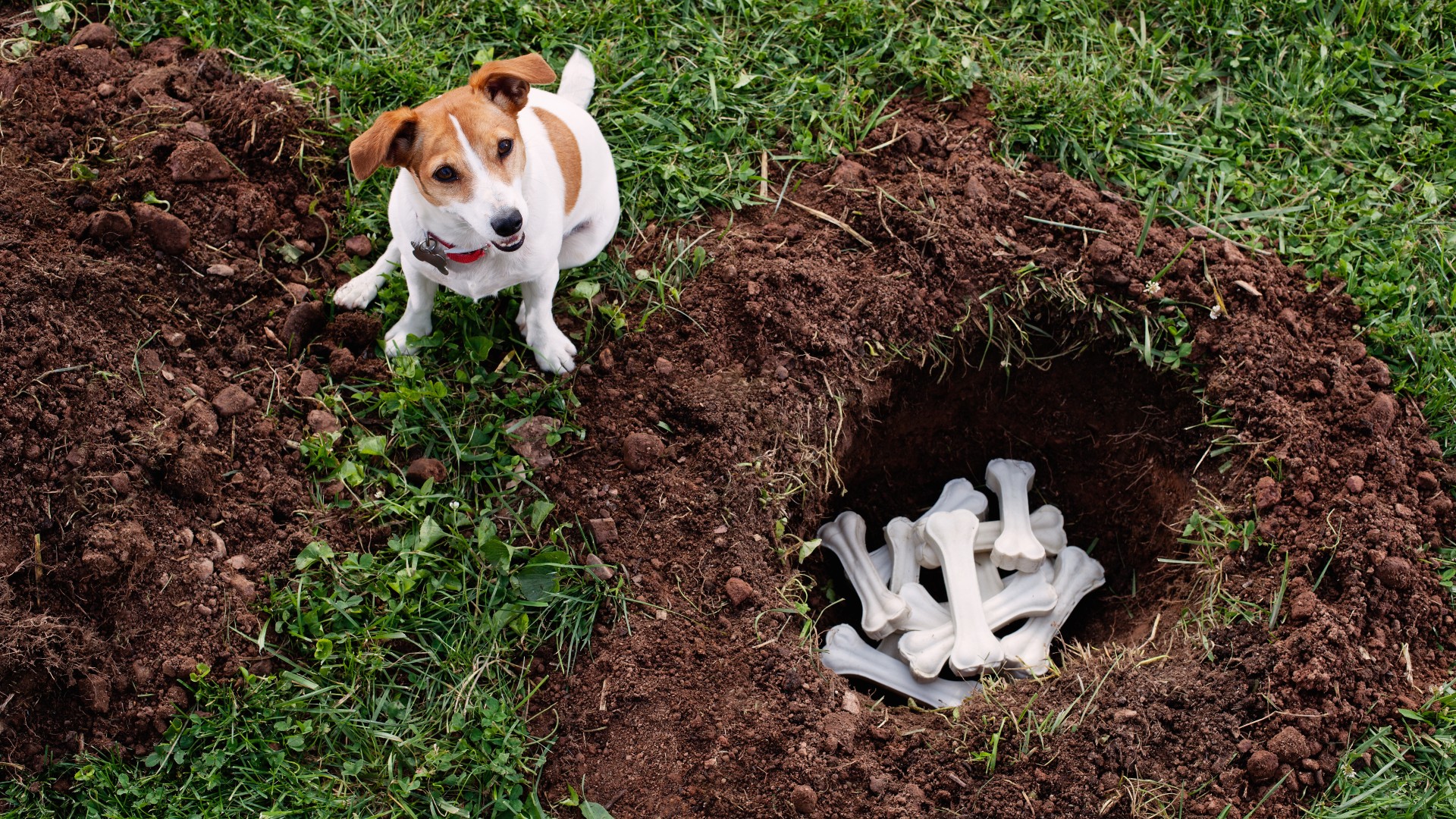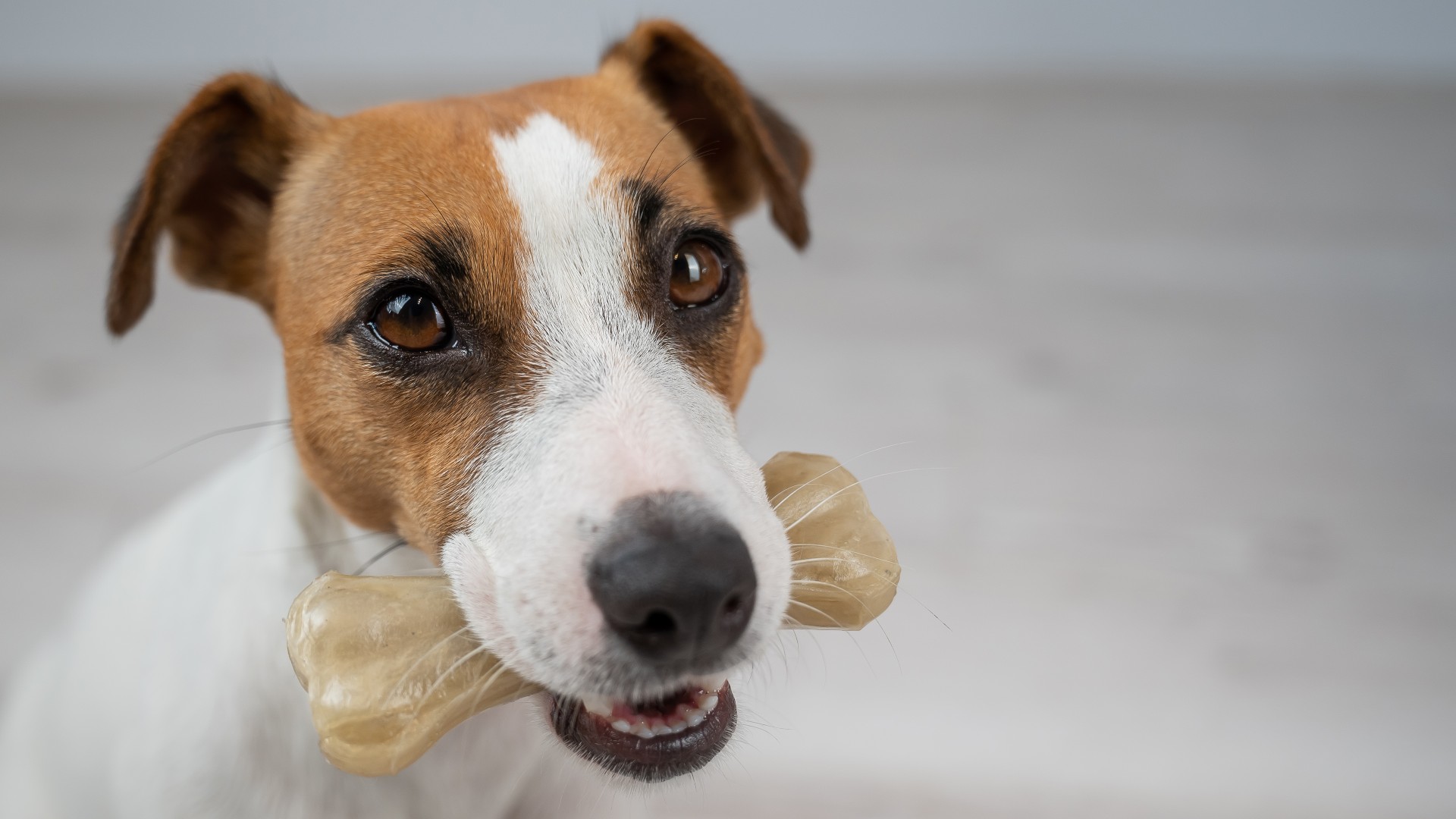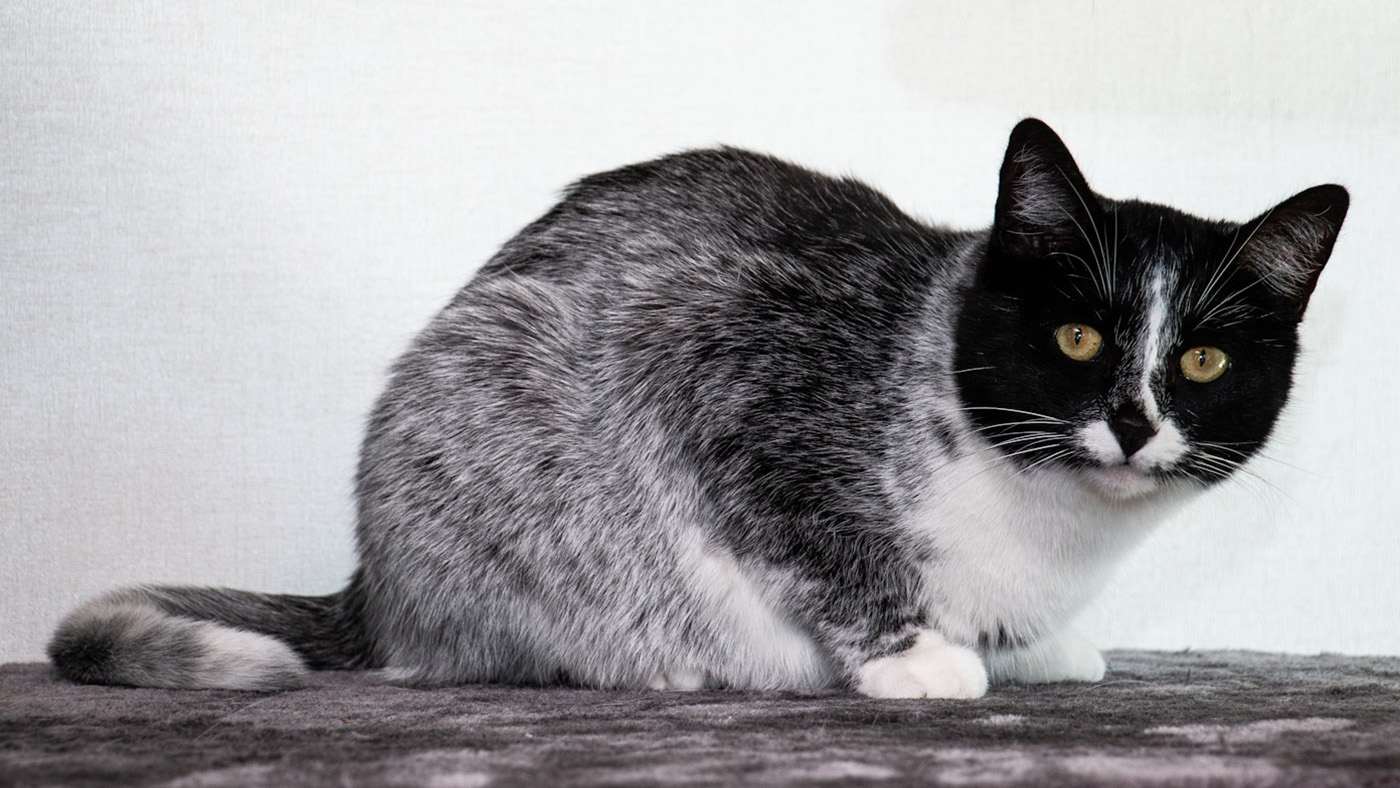Why do dogs hide food and treats?
Pondering the question 'why do dogs hide food and treats?' We reveal the most common reasons and share ideas on how you can help your canine stop

Why do dogs hide food and treats? If you’re the proud pet parent to a canine companion, it’s likely you’ve found yourself asking this question at least once since welcoming them into your family. Even if you give your beloved bundle of fur plenty of the best dog food, it’s likely that they may still engage in hiding behaviors from time to time.
The good news is, hiding treats and various other food items is pretty standard doggy behavior and isn’t usually cause for alarm. In many ways, dogs are natural hoarders and a lot of this kind of hiding behavior comes down to our canine companions simply following their natural instincts.
While dogs do have the capacity to act like squirrels, diligently accumulating and burying food to keep their personal pantry well stocked, hiding and hoarding behaviors can have potentially troublesome causes, such as anxiety or boredom. Below, we walk you through the main reasons dogs hide food and treats, when to be concerned and how to prevent it.
- Best dog treats: Reward your pooch with these tasty snacks
- Why is my dog grinding their teeth? Vet's guide to causes and treatment
- Why do dogs eat poop? We asked a vet…
5 reasons why dogs hide food and treats
There are various root causes of hiding behavior, some are completely harmless and purely your dog doing what dogs do, while others may stem from more complex issues. Here are five potential reasons that are driving your canine companion’s desire to hide their food and treats.
1. It’s in their DNA
The most obvious explanation as to why your dog is hiding food is because they’re wanting to make sure they have a stash that they can return to later should they feel hungry. In this context, hiding food and treats is completely normal and is something your dog’s ancestors would have done when living in the wild.
For non-domesticated animals, hiding food is a way of guaranteeing that they have enough stores to get them through lean times. Hunting trips aren’t always successful so if an animal does make a kill, it will often portion it up, eating some now and saving some for later.
Even though your pampered pooch is living in an environment where it doesn’t need to worry about its basic survival needs, those survival instincts still very much exist and can be difficult to override. Hiding food is particularly common amongst hunting breeds, such as the Beagle and Dachshund, two scent dogs who are natural trackers.
2. Anxiety
If you’ve ever spent time training a rescue dog, you know how much love and patience this can take. And for good reason - rescue dogs have often come from very difficult circumstances that make them highly anxious and this anxiety will often drive them to engage in challenging behaviors.
Even after they’ve been rescued and adopted into loving forever homes, rescue dogs may still hide any food or treats that you give them. This is because they’ve often come from situations where they faced extreme abuse or neglect and where food may well have been extremely scarce.
Previous exposure to inconsistent feeding in a home environment or having had to fend for themselves on the street are two scenarios that can trigger anxiety in dogs around food that leads them to want to hide and hoard their resources. This behavior often resolves itself over time as your dog learns that they’re safe and will be fed regularly.
3. Possessiveness
Just like food aggression and resource guarding in dogs, hiding food items is another way that some of our canine companions may try to protect their resources. Depending on their background, some pups may naturally be more possessive of their food than others and may decide to bury it or hide it somewhere around the house to avoid it being taken away.
This survival strategy is particularly common in multi-furkid families, where your dog may worry about their fur sibling stealing their food. Some dogs, particularly senior pups, often take longer to eat due to dental and mobility issues, so taking their food away and hiding it is a way of making sure their share is there when they want it.
4. Over-feeding
Believe it or not, you may be showering your beloved bundle of fur with a little bit too much love on the food front! Feeding your canine companion too much dry dog food or raw dog food as well as showering them with delicious treats on a regular basis may mean they’re getting more food than they need, which can lead them to hide it.
If you’ve been generously over-feeding your dog without realizing it and you notice they’re hiding a lot of their food and treats and saving them for later, rest assured that this is a great sign in a healthy dog. It means your pup knows they’re getting more food than they need and are stashing away the leftovers for when they feel hungry.
5. Boredom
Finally, hiding food and treats is often a result of boredom. Even if you have a good selection of the best dog toys for your pup to play with, if you’re regularly out of the house and your canine companion tends to spend a lot of time alone, hiding food often becomes their way of amusing themselves.
Think of it as almost being like a game to them. Because they’re not getting enough mental and physical stimulation, your dog will hide their food and then set themselves the task of finding it later. This wards off boredom and helps give them something challenging to do when they’re on their own.
How to prevent food hoarding

As you’ve seen, there are a number of potential reasons that your dog may be choosing to hide their food. While some are more a cause for concern than others, rest assured there are lots of things you can do to help minimize this behavior. Here are a few of our top tips and tricks:
1. Feed little and often
Whether it’s the best wet dog food or a dry equivalent, one way to stop your dog from hiding food is to reduce the portion size of their meals but feed them more often. Put their meal down in front of them and once they’ve eaten the amount of food that they want to eat, remove the bowl so they can’t hide any of the leftovers.
When it comes to treats, it’s important that these don’t make up more than 10% of your dog’s daily diet. It can be helpful to create a treat schedule, where you write down what treat or treats you’re going to give your dog each day and when you plan to give them. This will prevent your pup from stashing treats inside and outside the home.
2. Separate your pets at mealtimes
If you have more than one furkid, try separating them at mealtimes if you think possessiveness may be driving your pup’s hiding behaviors. You can either feed your fur babies in separate rooms or try different feeding times.
3. Provide your pup with enriching activities
For the fur baby who is hiding food in order to keep themselves amused and occupied when they’re on their own, it can be a great idea to add some mentally and physically stimulating brain games for dogs into their daily routine.
A great example of this would be to invest in one of the best dog puzzle toys that will make sure your pup’s brain and body gets a good workout when you’re out of the house. Not only are these super entertaining, but they’re also challenging and will make your dog work for their treats.
Another fantastic idea that you can use when you’re home with your pup and it’s too wet or cold to go outside is to play a few of our favorite indoor games for dogs. Activities such as hide and seek and tag are brilliant for helping your bundle of fur burn off energy, reduce anxiety and banish boredom.
4. Create a controlled eating environment
One clever way to stop your dog hiding food and treats is to create a controlled eating environment where your dog’s food is kept in an area that is only accessible to them during mealtimes. For example, you might use a dog playpen or a baby gate to section off an area so that your pup can’t remove their food.
5. Speak with your vet
If you’ve tried lots of different strategies to try to stop your canine companion from hiding food and treats but you still find this behavior happening on a regular basis, have a chat with your vet who will be able to help you figure out the cause of this behavior and how best to address it.
PetsRadar Newsletter
Get the best advice, tips and top tech for your beloved Pets

Kathryn is a freelance writer who has been a member of the PetsRadar family since it launched in 2020. Highly experienced in her field, she's driven by a desire to provide pet parents with accurate, timely, and informative content that enables them to provide their fur friends with everything they need to thrive. Kathryn works closely with vets and trainers to ensure all articles offer the most up-to-date information across a range of pet-related fields, from insights into health and behavior issues to tips on products and training. When she’s not busy crafting the perfect sentence for her features, buying guides and news pieces, she can be found hanging out with her family (which includes one super sassy cat), drinking copious amounts of Jasmine tea and reading all the books.
